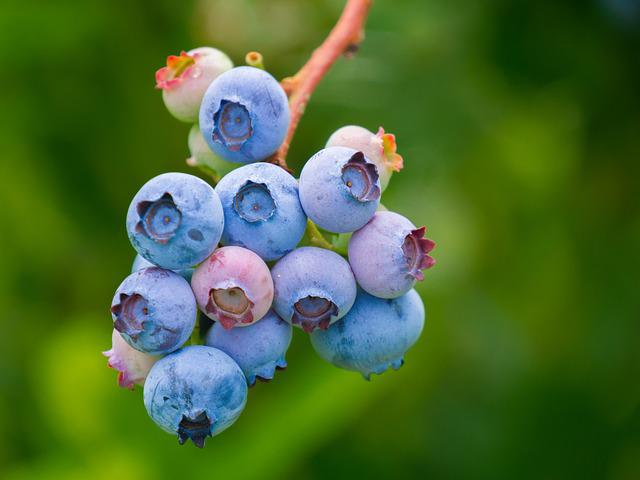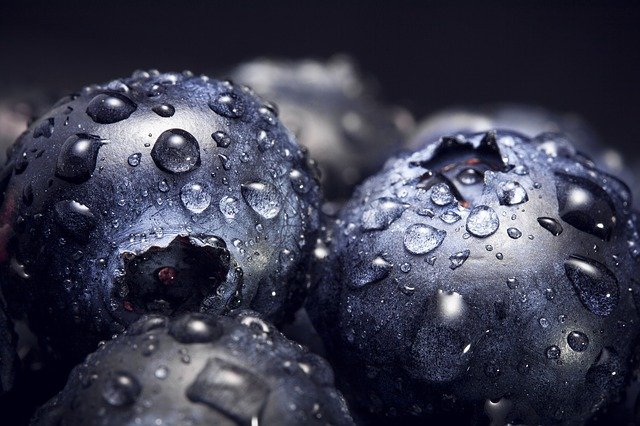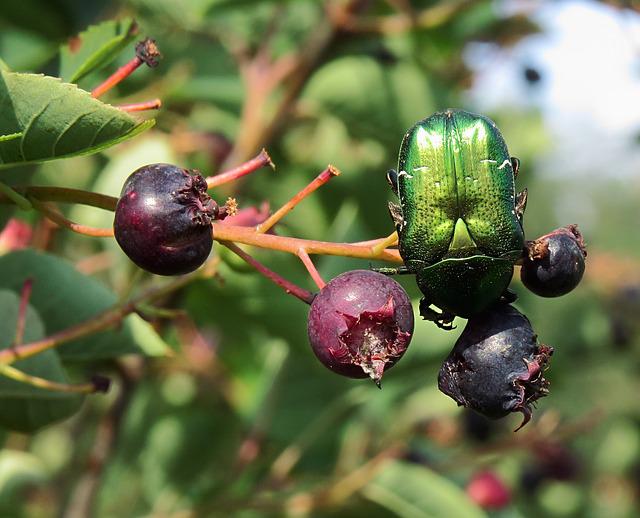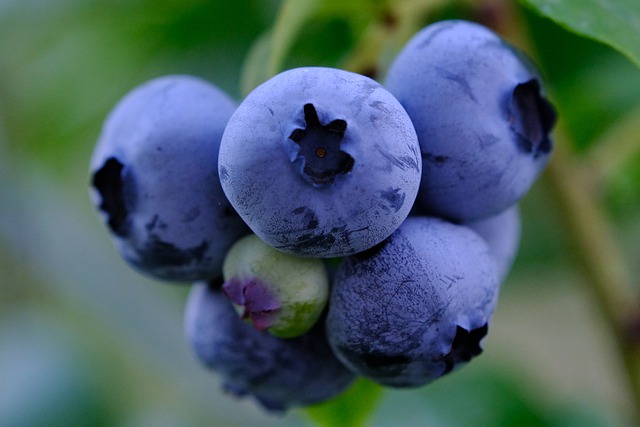Do Blueberries Grow On Trees? Things You Need To Know About This Fruit!

Blueberries do not grow on trees. They are a type of berry that grows on shrubs and small trees or bushes. Blueberries that are edible grow on bushes of varying heights, depending on the variety. They won’t grow on trees. If you see a blueberry growing on a tree, it’s not a blueberry plant. Wild blueberries can be good to eat, and they can be good for your health. You find wild berries should not be eaten until an expert says they are safe. It can be challenging to distinguish between healthy berries and harmful ones. If you aren’t sure what the berries are, don’t eat them. However, a tree known as the Japanese blueberry tree exists (Elaeocarpus decipens). This tree’s berries resemble large, olive-shaped blueberries, but they are poisonous. The tree can reach up to a height of 40 feet.
Table of Contents
Blueberry Plants: How Do They Look?
About 15-18 canes (straight branches) make up a blueberry plant. These branches are what blueberries grow on. Blueberry canes, unlike blackberry canes, don’t have thorns and are very smooth. Each bush grows 6–12 feet tall, or up to 2 feet tall, as a dwarf variety. Blueberry leaves are often oval-shaped and have a shiny green color. However, this color can be light blue in the summer and red in the fall. In the winter, blueberry leaves will fall off.
In general, the canes of blueberry bushes are about 6 to 12 feet tall (2–3 meters) with no sharp edges.
In early spring, blueberries start green and then turn blue when ripe. They come from white flowers that bloom in the first few weeks of the season.
Blueberries grow from teardrop-shaped flower buds that look like they’re about to open. Early next year, these buds will turn into white flowers. Then, they’ll start to produce green berries, which slowly turn red. Eventually, the color of ripe berries turns blue, but not right away.
How Much Height Do Blueberry Plants Gain?
They can grow up to 12 feet tall (4 meters) if they are of the tallest varieties, like the northern highbush, which is the tallest. To grow dwarf, blueberries usually only grow about 8–12 inches (20–30 cm) long. It is usually very quick for blueberry bushes to reach their full height.
When they are at their tallest, blueberry bushes can grow up to 12 feet high (4 meters).
Dwarf blueberries can grow up to 2 feet tall (60 cm), but they are usually much smaller.
A blueberry bush can grow to its full height or not, depending on where it grows, when there is enough water, acidic soils, and organic fertilizers in the soil. When blueberries are grown in the wild, the plants are usually smaller than when they are grown in a garden.
How to Recognize a Blueberry
The best way to distinguish a blueberry bush from a lookalike is to become familiar with its characteristics. Here are some key points to keep in mind when it comes to blueberries and their counterparts:
- Recognize blueberry bushes by their appearance (woody canes, 6-12 feet tall, white flowers, glossy leaves)
- Eat only wild berries that have been identified by a professional.
- Blueberry clones should be avoided (serviceberries, deerberries, farkleberries, and Japanese blueberries)
- You should be aware that some blueberry substitutes are toxic (nightshade and Virginia creeper, for instance)
- Make sure you only eat berries that you are completely sure of. The dangers of eating unknown berries are far too great.

Blueberry Bushes of Various Types
Blueberry bushes produce edible blueberries. On the other hand, Japanese blueberry trees are typically planted as hedges or as standalone landscaping trees. Choose from these varieties if you want to grow edible blueberries. Choose the ones that are appropriate for your climate:
Highbush
These blueberry bushes have upward-growing canes. They bloom in pink and have 1-inch-long dark green leaves. Autumn foliage changes to shades of red and orange. Highbush blueberries can reach a height of 12 feet. USDA Hardiness Zone 3 is the ideal climate for them.
Lowbush
This variety of blueberry thrives in USDA Hardiness Zone 2. They have shiny, dark green leaves that are half an inch long. The white flowers are shaped like bells. In the fall, the foliage turns a reddish-brown color. Lowbush blueberry bushes can reach a height of two feet.
Half-High Hybrid Blueberry Bushes
These blueberry bushes are a cross between highbush and lowbush blueberries. They are most at home in hardiness zones 4 to 5. White flowers are used. Autumn foliage is a vibrant shade of red and orange. They can reach a height of four feet.
Rabbiteye
These bushes are native to the southeastern United States. They are large bushes, reaching up to 15 feet in height. They thrive in USDA hardiness zones 8a through 9a. Rabbiteye leaves are green on top and bluish on the bottom. Pink bell-shaped flowers.
Is it Possible for Poisonous Berries to Look Like Blueberries?
The highly toxic nightshade plant produces blueberry-like berries. It is difficult to overstate the plant toxicity of nightshade. A handful of ripe nightshade berries is all that is required to kill someone. A small child can be killed by two ripe berries, while ten to twenty ripe berries can kill an adult. Worse yet, nightshade is extremely sweet and thus easily confused with delectable fruit.
- Two toxic plants that resemble blueberry bushes are nightshade and Virginia creeper.
- Never consume an unvetted wild berry.
A second extremely toxic plant is the Virginia creeper. While birds enjoy the ripe fruits, humans cannot consume any of these berries. While Virginia creeper is not as deadly as nightshade, it does have some disadvantages. This plant’s surface produces irritants that cause skin irritation. As a result, it bears a resemblance to poison ivy and oak.
Five trees produce berries that resemble blueberries in appearance.
While blueberries don’t grow on fruit trees, blueberry lookalikes can be found in the fruit. Experts have identified only those wild berries that are safe for human consumption. A sampling of the most common blueberry mimics, as per Wikipedia:
Serviceberry

Serviceberries, native to North America, is a delectable berry that grows on trees. They can be eaten and are highly regarded for their delectable sweetness. The gray bark of serviceberry trees is particularly smooth.
Serviceberries, which are larger and darker than blueberries and grow on trees, is a related fruit. These are edible. The flowers of serviceberries have a whitish bloom that resembles that of blueberries in color. Aside from the fact that serviceberries have five petals, blueberries don’t fully unfurl. Blueberry-sized fruit can be found on serviceberry plants in full bloom and ready to harvest. They have an initial green color, but they turn a bright reddish-pink and then dark purple as they mature.
Deerberry
In addition to blueberries, deerberries are another edible berry that grows on bushes. These bushes are closer to blueberries than serviceberries, which are already close in appearance to them. Woody canes sprout from the deerberry bushes, which can grow to 10 feet (3 meters). In addition, they have bell-shaped white flowers that resemble blueberries.
Bushes that bear deerberries can be distinguished from blueberry bushes by the texture and form of their leaves.
The leaves of blueberries are oval and smooth on the edges.
The leaves of deerberries are more pointed and coarsely edged.
It’s possible to eat deerberries, just like blueberries.
When fully ripe, deerberries are a deep black-blue color with a pronounced tart flavor. The leaves are the best way to distinguish this plant from blueberry bushes. Deerberries, in contrast to blueberry bushes, have rough, pointed leaves. There is no such thing as a deerberry leaf that is completely smooth and glossy.
Farkleberry
There are edible farkleberries (also known as sparkleberries and huckleberries). Despite this, most people dislike their taste of them. Trees and shrubs with 12–15 feet (4–5 meters) can produce these berries.
Compared to blueberry plants, farkleberries have thinner and more flexible stems and grow on shrubs or trees.
Farkleberries can be eaten, but their extreme bitterness is a turn-off for many.
The stems of farkleberry shrubs are the most distinctive feature. Blueberries, on the other hand, have thick, woody stems. Instead, they have branches that resemble those of a typical tree. The white flowers on these branches produce the berries.
Grafted Blueberry Tree for Research Purposes
Because it’s a blueberry bush, this is the most difficult lookalike to distinguish. There’s a good chance it’s grafted onto a blueberry bush, but that doesn’t mean it is one. Grafting blueberry bushes onto other plant species is a simple process. This results in a blueberry bush sprouting from a different type of plant. Unlike a blueberry plant, it’s impossible to tell this apart. According to preliminary research, these trees produce fruit that appears to be safe to eat. For the time being, it’s best to be on the safe side until more research can be done.
Blueberry Trees from Japan (Elaeocarpus decipens)
There are no edible blueberries on this tree, so don’t bother trying to eat them. These are blueberries in the sense that they are blueberries, but they are not blueberries in the sense that they are blueberries. Under ideal conditions, these trees can reach 60 feet (18 meters). They have much larger leaves than the leaves of a typical blueberry bush, with broad, flat surfaces.
Evergreen ornamental trees and Japanese blueberry trees have broad leaves. A Japanese blueberry tree is possible to reach a height of 60 feet (18 meters). This tree’s berries are inedible.
The tree bears no resemblance to a blueberry bush in terms of appearance, and its flowers are wispier. Despite this, the berries it produces are like blueberries. The shape of the berries varies greatly between varieties. Blueberries in Japan resemble olives in appearance. They’re long and oval. Blueberries, on the other hand, are spherical.

